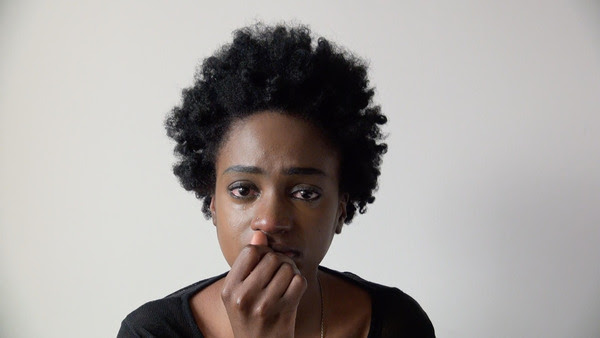The provocation of vulnerability has long been a mainstay of impactful art. Video and film media, given their reliance on the staging of exposure and emotional confrontation, are no exception. An exhibition at Young Projects in Los Angeles curated by NextArt explores these very themes, looking at the ways in which technology can interpolate human vulnerability and probe the complex interstitial spaces of mediated human encounters. “Vulnerability: The Space Between” features both contemporary and historical works that paradoxically re-sensitize affect through facsimile, performance, surveillance, virtual reality, film, and installation. In an era of increasing detachment and impoverished cultural empathy, the exhibition reminds us of the fragility and pain of the human condition and the healing and redemptive potential of its acknowledgment.
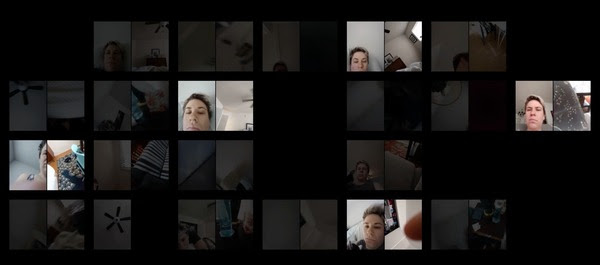
Kate Hollenbach, phonelovesyoutoo (31 days of cellphone recordings) (2016). Courtesy the artist.
The exhibition opens with a series of recent and historical performance-based works from the 1970s on, including works by Marina Abramovic, Bas Jan Ader, Chris Burden, Sophie Calle, Valie Export, Regina José Galindo, and Yoko Ono, among others. One of the earliest incarnations of video was as documentation of the more ephemeral medium of performance.Both monologic and interactive examples set the stage for this exploration of corporeal and emotional vulnerability. In Blind Spot (Punto Ciego), a performance piece by Galindo from 2010, the artist stands naked on a pedestal in a gallery and allows blind tourists, unprepared for the nature of their encounter, to touch and explore her body unhindered by resistance or self-protection. This physical act of touch, innocent in its unknowingness and yet explicitly dangerous in its lack of prophylactic barrier speaks volumes to the simultaneous freedom and bondage of contact.
Similarly, the legendary and often imitated performance by Yoko Ono, Cut Piece (1964), shows the artist sitting on a stage in ”her best suit” with a pair of scissors ominously set in front of her. The audience is told they may approach and cut a small piece of the fabric clothing her, taking it with them. The imminence of potential danger is apparent, but the supremely vulnerable act of submitting to the will of the other and trusting in their adherence to an unspoken social contract of mutual care is palpable.
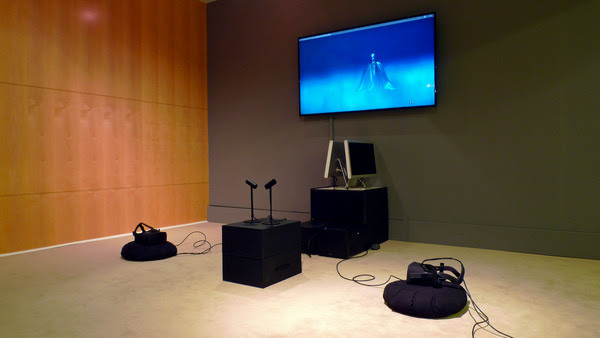
VVVR by Plus Four (2017), a Virtual Reality Experience for two people. Courtesy of the artist and Young Projects.
Other works in the exhibition, such as Coming Out Simulator (2014) by Nicky Case, attempt to create a facsimile of self-disclosure and confession. As a kind of interactive game, the viewer is given the chance to navigate a moment in the artist’s personal history, simulating the conversation in which he comes out to his mother as gay. This personal revelation captures a feeling of communicative despair in which self-exposure becomes painful and negating because of the hurtful reaction elicited by the other.
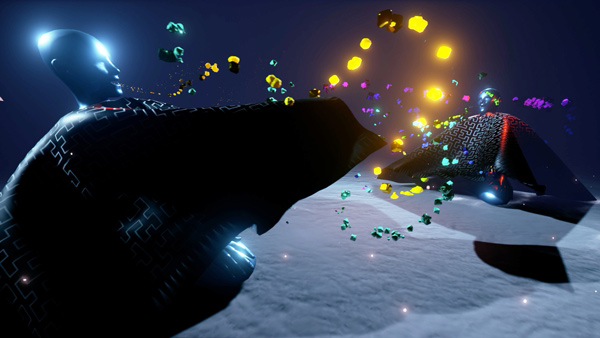
VVVR by Plus Four (2017), a Virtual Reality Experience for two people. Screen grab. Courtesy of the artist and Young Projects.
Another piece in the show, VVVR (2017) by Plus Four (Ray McClure and Casey McGonagle), offers a positive counterpoint to communicative risk, as an interactive virtual reality in which two must participate and ”connect” virtually by donning Oculus headsets and finding common ground in an immaterial context. Their voices and emissions activate the exchange within a virtual void, becoming ecstatic visualizations of speech and sound within a vaguely utopian, though tenantless, space.
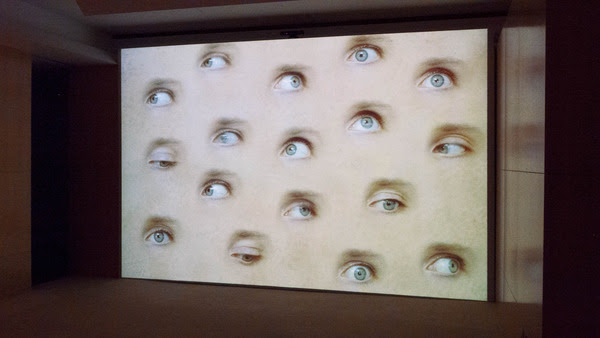
Luxloop, If The Walls Had Eyes (2014), an interactive projection, installation view. Courtesy the artists.
Other works in the exhibition flirt with themes of surveillance and omniscience such as If The Walls Had Eyes (2014) by Luxloop (Ivaylo Getov & Mandy Mandelstein), a digital installation of blinking human eyes that watch and follow the movements of the viewer as they move within the range of their ”gaze,” and Lauren (2016) by Lauren McCarthy an ”Alexa” like device capable of human empathy who surveils the home of participants while intuiting their needs with an anticipatory thoughtfulness.
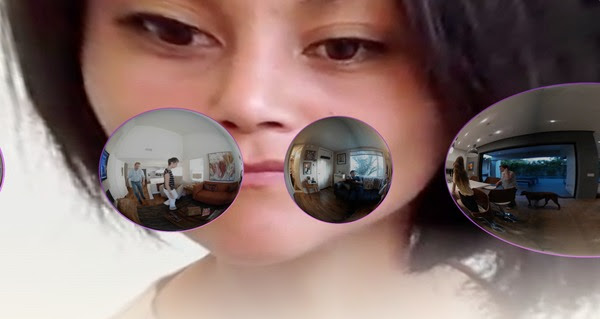
Lauren McCarthy, Lauren (2017), web-grab. Performance, interactive website and installation. Courtesy the artist.
Among the works in the exhibition, I Love You And That Makes Me God (2017) by Fawn Rogers resonates deeply, tapping into something darker and far more unsettling in the vein of a confessional. This immersive installation requires that the viewer enter a secluded, darkened space at the back of the gallery. Cornered by two screens in which nearly 60 individuals are video-taped repeating a phrase that simultaneously feels like admission, threat, and mantra, we are left feeling vulnerable ourselves, accosted at times, and seduced at others. As each subject repeats ”I love you and that makes me god” with varying degrees of honesty, artifice, disingenuousness, sympathy, and even aggression, the full spectrum of human vulnerability seems to unfold before our eyes, both in the delivery and in our receipt of its offering.
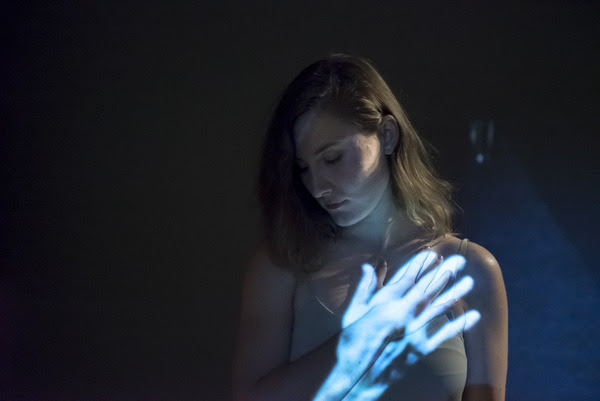
Mandy Mandelstein, Touch (2013), an interactive installation for two people. Courtesy the artist.
True vulnerability is an admission. Whether it be the need for love, the search for meaning, the acknowledged imperfection of self, the persistent feeling of worthlessness, or the fear of loss, it is all in one way or another dependent on the existence, recognition, approval, or disavowal of the other. Rogers captures the problematic coexistence of these impulses in her piece, not to mention the flawed social contract of reciprocity that is to hold everything in place—but often fails to protect or return. ”I love you and that makes me god”—the phrase itself is repellant in its threat of subjugation, but inexplicably coercive in its implied promise of affection.
Much in the same way that Abramovic’s viewers would burst into tears when confronted with empty stillness, so too are Rogers’ viewers overwhelmed by the rhetorical offering of love and its fractious condition of power. Standing alone with this loaded installation, undeniably staged to feel confrontational and imperative, something pathological is happening in our moment of repeated exposure. Each subject’s delivery, as captured by Rogers, is different, and thus each individual’s experience of the mantra is singular, making the potential for mixed meaning and ambivalent reception endless. Love and our need for it become something potentially redemptive, harmful, extravagant, and conditional, as variegated as the word itself is reductive.
“Vulnerability: The Space in Between” offers a disarming experience of admission and disclosure. Alone in the darkened gallery space, surrounded by technologically mediated experiences, we are brought strangely closer to an empathic encounter than were we out in the realm of the real.
“Vulnerability: The Space in Between,” October 5 – December 29, 2017 at Young Projects Gallery, 8687 Melrose Ave. #B230, West Hollywood CA 90069. www.youngprojectsgallery.com

